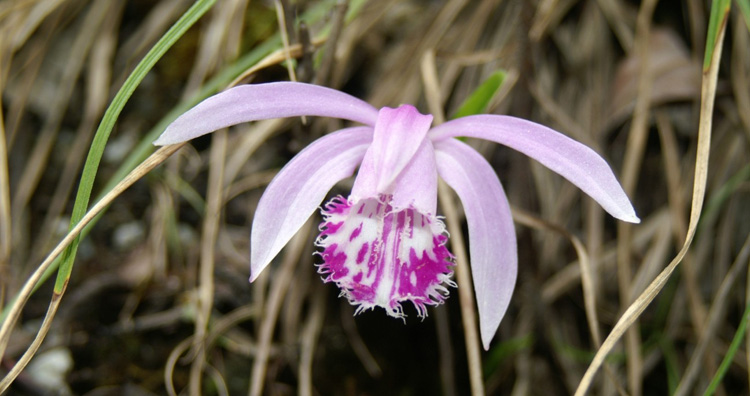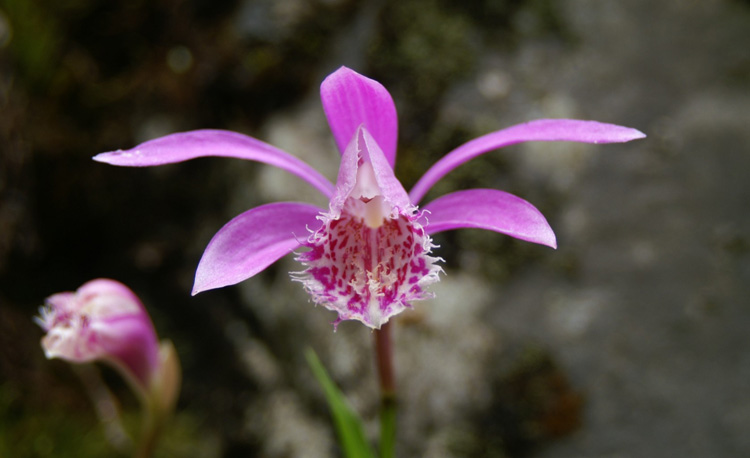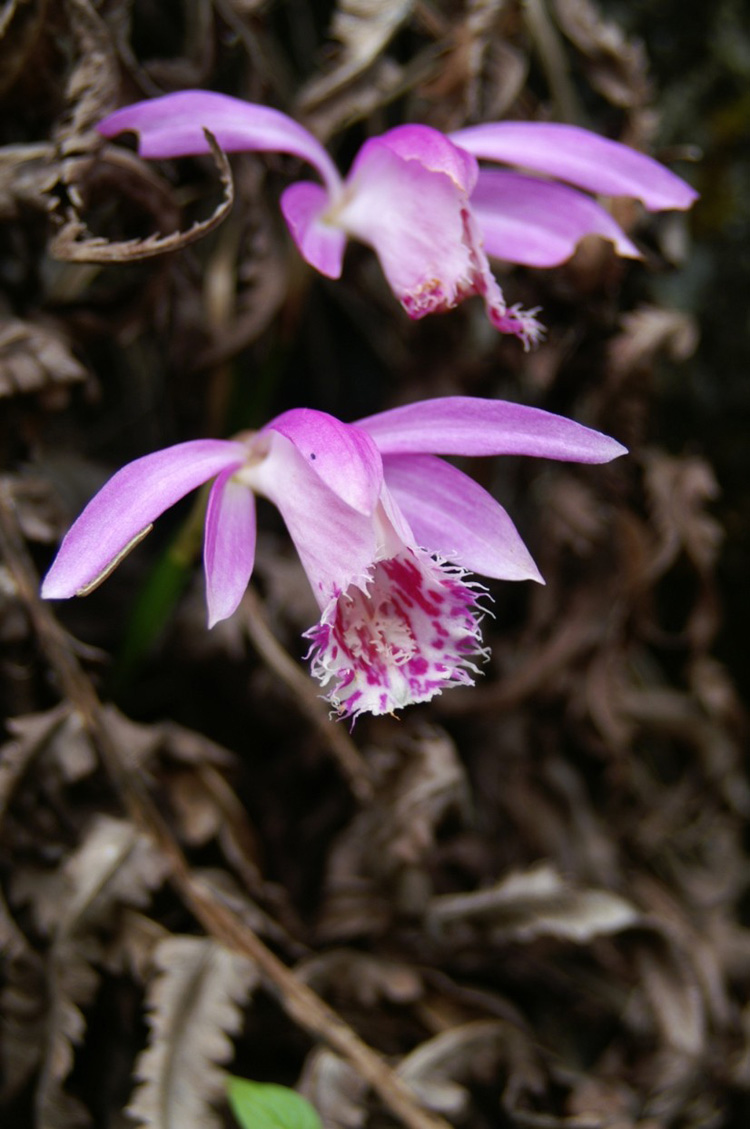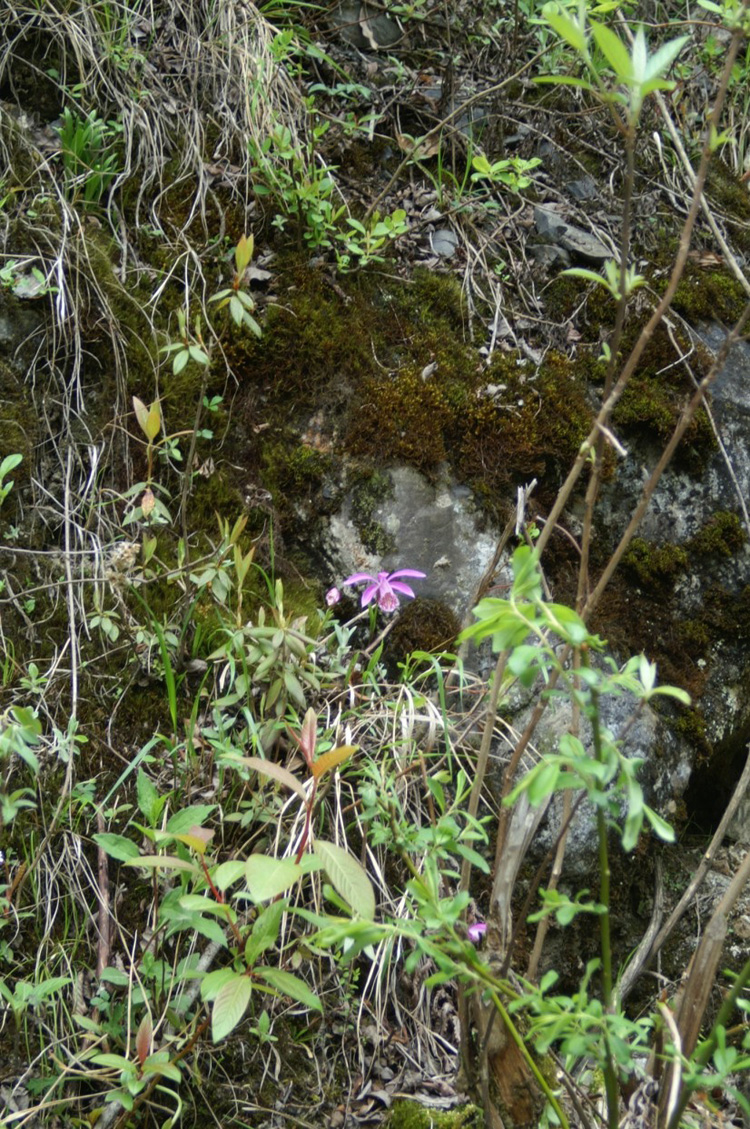Published in Bechtel, H. P.J. Cribb & E. Launert: Orchideenatlas: 372. 1980.
Basionym is Pleione limprichtii Schlechter , 1922, published in Botanische Reisen in den Hochgebirgen Chinas und Ost-Tibets:
346. Published as volume 12 of addendums of Fedde, F., ed.: Repertitorium Specierum Novarum Regni Vegetabilis. 1922.


P. limprichtii was long considered a separate species, especially because cultivated stock, originating from the Erlangshan and Kanding in West Sichuan, has strongly lacerated lamellae on the lip, usually pink to bright pink sepals and petals, and the lip is white inside, covered with fine magenta and red dots, while P. bulbocodioides is more or less deep magenta in all parts and has undulated lamella that are not or only very sparsely lacerated. The plants from Sichuan known as P. limprichtii in cultivation are easier to grow than P. bulbocodioides from various other sources. However, plant material collected in Northern Sichuan and cited as P. limprichtii in the formal publication by Schlechter, didn’t survive in cultivation or was just collected as herbarium material. Of these collections, some originated in Maoxian county, south of Huanglong. Colonies of pleiones can be found in Huanglong at 1750 m that have pink to whitish pink sepals and petals with a lip white inside covered with fine magenta and red patterns as well as carrying deeply lacerated calli. These characters are regarded typical for P. limprichtii. The plants grow together with typical forms of P. bulbocodioides or in close proximity to them. Having seen great variability in populations of P. limprichtii in Huanglong and between the Erlangshan and Kanding, where we haven’t seen P. bulbocodioides var. bulbocodioides in close proximity but forming separate colonies in the region as well, we consider P. limprichtii to be a mere variety of P. bulbocodioides. P. bulbocodioides var. limprichtii differs sufficiently from the type variety to be easily recognized, but does not warrant species status because it overlaps with the type variety considerably in morphology as well as in the distribution. The single flower is carried on a short scape, has a diameter of 6-9 cm and arises before the single deciduous leaf appears. The leaf expands after flowering and reaches a length of 10-15 cm.
Flowering: mid April-early May.


四川独蒜兰一直作为一个独立的种处理。目前栽培的四川独蒜兰来自四川西部的二郎山及康定,其唇瓣上的褶片为强烈撕裂状,萼片及花瓣通常为粉红色至亮粉红色,唇瓣内部为白色并带有红紫色及红色圆点。而独蒜兰(原变种)花的各部分为深红紫色,唇瓣上的褶片为波状且不呈撕裂状或仅呈稀疏撕裂状。产自四川的四川独蒜兰比其他地方的独蒜兰更容易栽培。然而鲁道夫 • 施勒希特作为四川独蒜兰正式描述的采自四川北部的植物,则没有被普遍栽培,只有标本材料。在这些所谓的四川独蒜兰的标本 有些采自位于黄龙南面的茂县。黄龙的独蒜兰克隆群落,萼片和花瓣为粉红色至浅粉红色,唇瓣上面为白色具有红紫色及红色图案和深裂的褶片。这些特征是四川独蒜兰的典型形态特征。它们与典型的独蒜兰( 原变种) 伴生或近混生。此外,黄龙的四川独蒜兰群体内常常有相当大的变异。在二郎ft 及康定之间的地区我们对独蒜兰( 原变种) 进行了仔细观察, 与其他地方一样, 它们也可以形成克隆群落。根据我们的研究, 我们认为四川独蒜兰只能作为独蒜兰的一个变种处理, 而不能作为种的等级来处理。四川独蒜兰和其原变种很容易区别,但由于它们的外部形态以及分布范围经常重叠,有时也难保证正确识别。花单生于较短的花葶上, 花直径6 - 9厘米, 叶片一枚, 花先叶出现。当花出现后叶片才展开, 叶片长1 0 -1 5厘米。
花期:四月中旬至五月上旬。